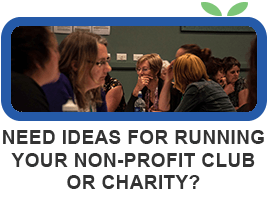Last updated October 9, 2014
There’s an old fundraising saying that suggests three simple steps to the fundraising process. First you have to get someone to open their heart. Second, you have to get them to open their mind. And then lastly you can ask them to open their wallet.
Unfortunately many organisations are so focused on making the ask, that they’ve failed to learn how to open the hearts and minds of potential donors. It becomes all about the money and any sort of human connection is lost. Big mistake.
Fundraising is more about relationships than anything else. It’s about how you communicate with, and how you care for, the people who support your cause. Most of all, it’s about making your donors feel like their support is truly – genuinely – absolutely – making a difference.
Telling stories is one of the best ways you can do this. Written well, they take away your organisation as ‘the middle man’ and allow your supporters to see how their donations are making a real difference, in the lives of real people. People don’t care about how many programmes you run, they care about how much of difference those programmes make.
When writing stories to include in your marketing and communication, make sure you:
Make the story about the person or people involved, not your organisation.
You don’t have to explain exactly how the programme works or list the specific services you offer, you just have to tell the story of how successful those programmes have been. Stories should be far less about what you did and far more about why the programmes matter.
Introduce your readers to the person or people by name.
Many organisations assume that their clients would not like to be identified when telling their story, but more often than not, the assumption is unfounded. Take the initiative and actually ask for permission – you may be surprised by how many people are happy to make their story known.
If your clients really would like to remain anonymous, you do not need to break confidentiality to give your ‘characters’ a name. Simply introduce the people in your story by saying something like: ‘Let’s call them Sam’.
If you work in a sensitive area where clients are reluctant to share their stories, consider talking to past clients or family members. Often when time and space is put between a person and the difficult situation, people are happy to share how far they have come.
Tell the whole story, so that your readers can put everything into context.
It is important to paint a picture of how your client got to their point of crisis, so make sure you start your story right at the beginning. Remember to talk about who else is affected by the situation and what those effects are. You need to tell the story in a way that people feel like all their questions have been answered.
Use figures and statistics with care.
Figures and statistics mean different things to different people, so you can never be sure how a specific statistic will be received. It is much more effective to focus on what the figures and statistics actually mean for the people you support. What does that look like for one person on a day-to-day basis? What does that look like for your community?
Give examples of what the ‘before’ and ‘after’ situations look like.
Powerful stories give comparisons of what life would look like for your clients or service users if your programmes and services didn’t exist. Be specific about what your clients can do now that they couldn’t do before. Use colourful words which truly describe how your programmes and services have changed your clients life in a real sense.
Write your stories with a classic storytelling plot.
Your supporters want to get to know the Target (that’s the main character in your story) and they want to know all about the Villain (eg. poverty, a disability, a health condition). Your organisation is the Hero and your supporter’s donation is the Catalyst that enables the Hero to save the day. Good stories take your reader on a journey, so think of your stories as a classic fairy tale where a donation enables the happy ending.
Use a conversational tone.
Your stories are not being graded for correct grammar or punctuation, so keep them chatty like you’re talking with someone over a cuppa. Powerful stories are more personal than proper.
Are creative in how you share your stories.
A picture really does tell a thousand words, so try to make your stories as visual as possible. Use photographs, quote bubbles, images and illustrations to really get the message across. Experiment with digital storytelling techniques and share your story online using both video and audio.
Remember, practice makes perfect – so make storytelling a habit in your organisation and encourage your whole team to get involved.
If you think this article would be useful for your members, you are welcome to use it on your website or in your newsletter. We just ask that you let us know where it is being used, and that you acknowledge our website at the bottom of the article. If you are using the article online, please include a link to our homepage.




